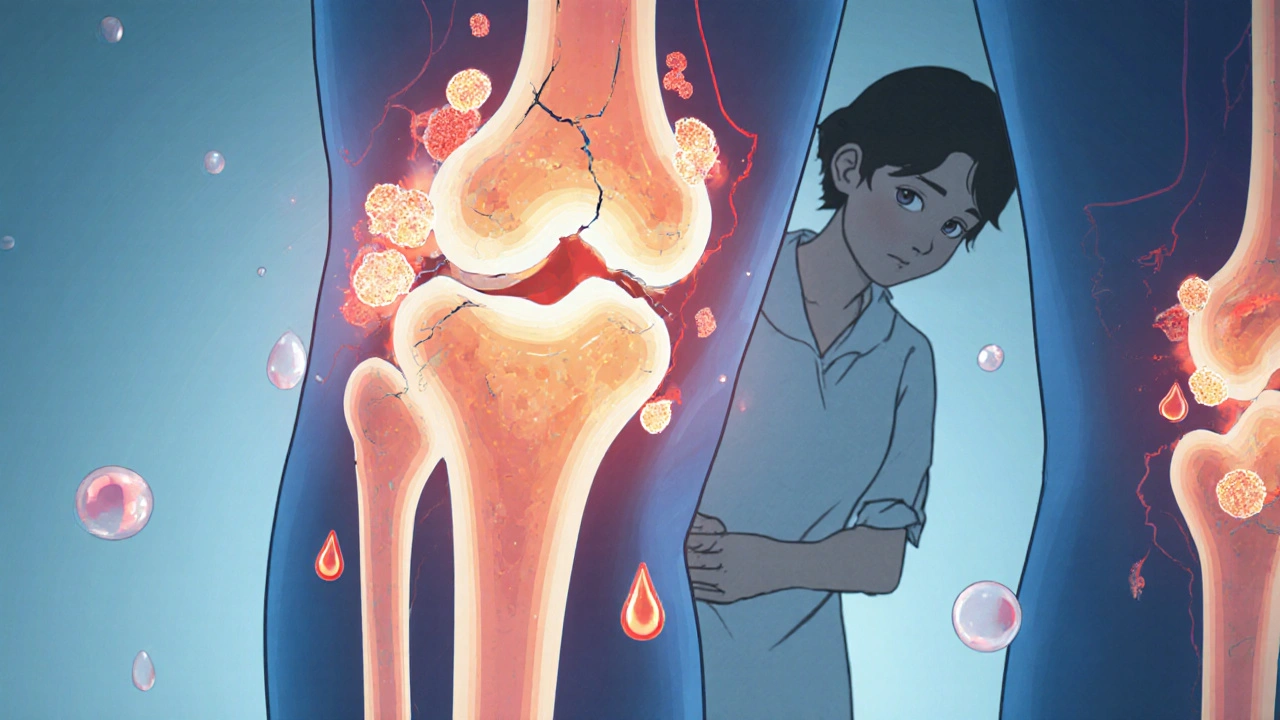When talking about alendronate, a prescription medication that slows bone loss by inhibiting osteoclast activity. Also known as a bisphosphonate, it belongs to a class of drugs designed to keep bones strong and reduce fracture risk.
Alendronate is most commonly prescribed for osteoporosis, a condition where bones become porous and fragile, often leading to breaks from minor falls. The disease affects millions, especially post‑menopausal women and older men, and it drives a major need for effective treatments. By targeting the bone‑remodeling cycle, alendronate directly addresses the core problem of excessive bone resorption.
The drug is part of the larger bisphosphonates, a group of compounds that bind to bone mineral and inhibit enzymes needed for osteoclast function. This class includes other agents like risedronate and ibandronate, each sharing the same basic mechanism but differing in dosing schedules and potency. Understanding that alendronate is a bisphosphonate helps explain why it must be taken on an empty stomach and why proper positioning after a dose matters.
Before starting treatment, doctors usually order a bone density test, often a dual‑energy X‑ray absorptiometry (DXA) scan that measures mineral content in the hip and spine. The results give a T‑score that categorizes bone health and guides whether alendronate is appropriate. A low T‑score (‑2.5 or below) signals osteoporosis, while higher scores might still benefit from the drug if other risk factors exist.
Alendronate’s primary benefit is fracture prevention. Clinical trials have shown that weekly 70 mg dosing can cut vertebral fracture risk by up to 50 % and hip fractures by roughly 30 %. The medication’s effects build up over months, so patients should stay the course for at least a year before judging effectiveness. Consistency also helps maintain steady drug levels in bone, which is crucial for sustained protection.
Side effects are generally mild but worth noting. The most common complaint is gastrointestinal irritation—heartburn, esophageal soreness, or nausea—especially if the pill isn’t taken with enough water or if the person lies down too soon. Rarely, users may experience atypical femur fractures or osteonecrosis of the jaw, conditions linked to long‑term, high‑dose use. Regular dental check‑ups and prompt reporting of jaw pain can mitigate these risks.
Many patients wonder whether supplements are needed alongside alendronate. Calcium and vitamin D are often recommended because they provide the raw materials that the drug helps retain in bone. A typical regimen includes 1,000–1,200 mg of calcium and 800–1,000 IU of vitamin D daily, though dosage can be adjusted based on blood levels and dietary intake.
Adherence can be a hurdle; forgetting a weekly dose feels easy, but skipping can reduce the drug’s protective effect. Setting reminders, using pillboxes, and pairing the dose with a regular weekly activity (like a grocery run) can improve compliance. If a dose is missed, it’s best to take it as soon as remembered—unless it’s close to the next scheduled dose, in which case skip and continue as planned.
Finally, while alendronate is a strong choice for many, not everyone will stay on it forever. After five to ten years, doctors may evaluate bone density again and discuss a “drug holiday” if scores have improved and fracture risk is low. This strategy balances long‑term benefits with the small chance of rare side effects.
Below you’ll find a curated set of articles that dive deeper into each of these points—ranging from detailed dosing guides and side‑effect management to comparisons with other osteoporosis therapies. Explore the collection to get practical tips, real‑world experiences, and the latest research on making alendronate work for you.

Explore how alendronate helps cancer patients with bone metastases, its benefits, safety, and when to choose it over IV options.
View more